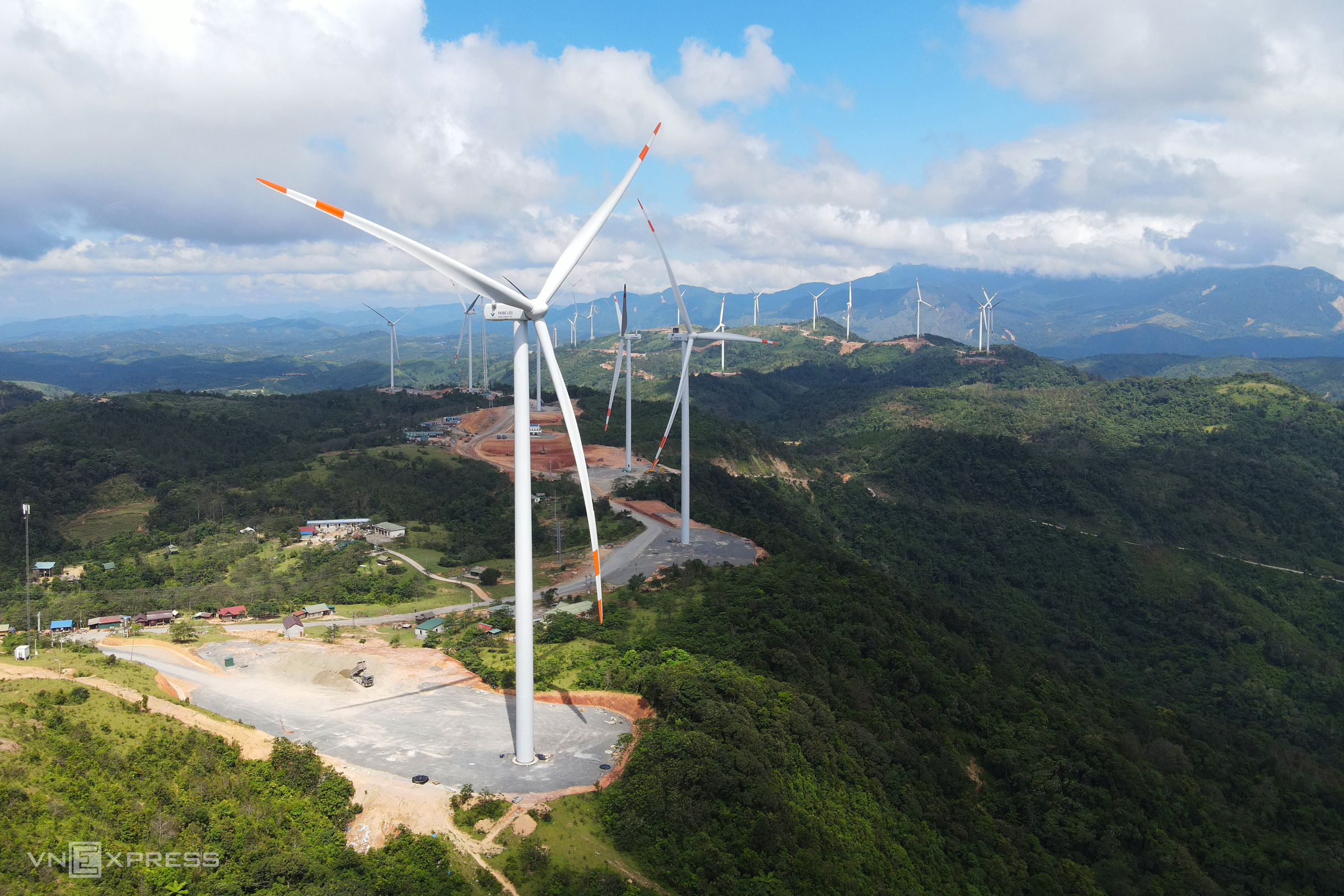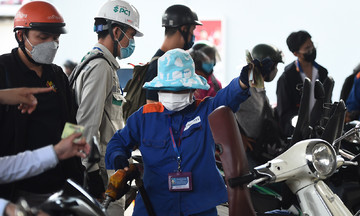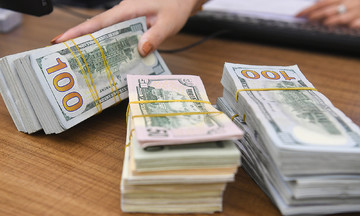Vietnam's green bond market saw the issuance of approximately 1.16 billion USD worth of bonds between 2019 and 2023, according to the "Manufacturing Vietnam Energy Plan 4.0" (MVEP 4.0) report recently published by the Vietnam Business Forum (VBF) and the Global Energy Alliance for People and Planet (GEAPP).
Green bonds are similar to conventional bonds but are specifically designated to finance projects with positive environmental impacts. The MVEP 4.0 report predicts continued growth for the green bond market in 2024-2025.
However, the report highlights that green bonds haven't yet been utilized to support the renewable energy sector. A key obstacle is the perceived high risk associated with lending to green projects compared to traditional lending. This perception stems from uncertainties about long-term returns on investment and environmental impact assessments.
 |
A wind farm in western Quang Tri. Photo: Hoang Tao |
A wind farm in western Quang Tri. Photo: Hoang Tao
To help the renewable energy sector access green bonds, MVEP 4.0 recommends that Vietnam adopt international definitions of "green" projects. This would enable the labeling of infrastructure projects, such as wind and solar power, that meet the criteria. The report suggests that adopting these standards "would increase access to international capital markets for private companies involved in these projects, fostering the development of the offshore wind power sector by reducing financing costs."
The lack of clear criteria and definitions is a major reason for the limited size of Vietnam's green bond market overall, not just in the renewable energy sector, according to experts.
At the "Green Bond Market Development" seminar on 26/6, Vu Chi Dung, Head of Legal and External Affairs Department of the State Securities Commission (SSC), noted that Vietnam lacks a national green taxonomy. This absence of a framework to define what qualifies as "green" and eligible for green finance creates difficulties for issuers, verifiers, and investors in evaluating, selecting, and monitoring projects.
Dung emphasized the need for clear and feasible definitions of "green" to form the basis for regulations, processes, and technical standards across the green bond market.
Under the adjusted Power Development Plan VIII, renewable energy sources (excluding hydropower) are targeted to account for 28-36% of total electricity capacity by 2030, rising to 74-75% by 2050. Solar power is projected to contribute 35.3-37.8%, while wind power is expected to account for 25.6-27.5%. Offshore wind power alone is targeted to reach 139 GW by 2050.
MVEP 4.0 recognizes Vietnam's abundant renewable energy resources but notes that they haven't been effectively exploited. While the economic potential of solar power is estimated at 380 GW, primarily concentrated in the southern, south-central, and Central Highlands regions, actual deployment remains limited.
Similarly, Vietnam possesses the best onshore wind potential in Southeast Asia, estimated at 217 GW. The country's 3,260 km coastline (excluding islands) provides a significant advantage for offshore wind power development. Current estimates suggest that the technical potential from fixed-bottom and floating offshore wind power ranges from 160 GW to 309 GW.
According to MVEP 4.0, Vietnam currently enjoys relatively favorable fiscal conditions due to low public debt and inflation rates. However, the state budget still struggles to meet infrastructure investment needs. Therefore, the development of renewable energy will continue to rely heavily on commercial capital, especially international investment.
Within the region, some markets have successfully mobilized green bonds for renewable energy projects, including Taiwan, Indonesia, and the Philippines. For example, as of 8/2020, the estimated total value of green bonds issued by Philippine organizations was 2.6 billion USD, largely to finance renewable energy projects.
Vien Thong












